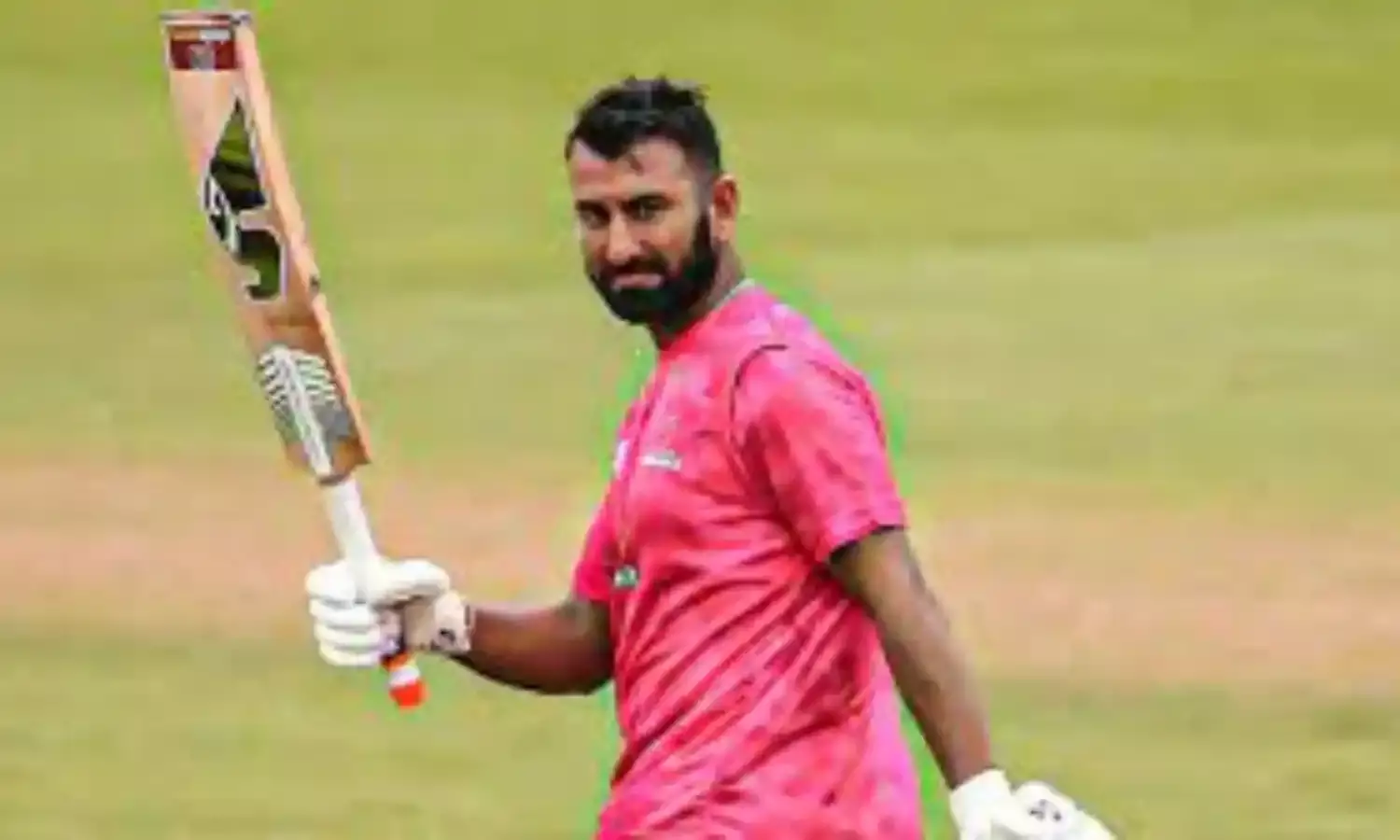A Fitting Landmark For India’s Sheet Anchor
Cheteshwar Pujara plays courageously and skillfully, notching up big scores regularly
He is that rare breed – a specialist Test match cricketer. In these days of incessant slam bang cricket his kind are an endangered species. Not that it bothers Cheteshwar Pujara one bit. He carried on with his task as courageously and skillfully as ever playing the role of India’s sheet anchor in the traditional format with aplomb, notching up the runs and big scores regularly and piling on the kind of records that have eluded the greatest of India’s run machines.
On Friday he becomes the 13th Indian to figure in 100 Tests, a fitting landmark for a dedicated cricketer who has built his reputation on technique and temperament rather than reverse sweeps and switch hits.
It is never easy to replace a legend and Pujara had the enviable task of taking the place of Rahul Dravid as India’s No 3. When Dravid retired the hearts of the Indian cricket fans were filled with trepidation. ‘Could his place ever be filled?’ they asked their minds filled with anxiety. But they need not have worried.
In his first innings for India at No 3 even as Dravid was still around Pujara hit a stroke-filled 72 to steer his team to a seven-wicket victory over Australia in 2010 and it was quickly obvious that once the great man called it a day the team had a ready and more than adequate replacement.
And Pujara has been just that for nearly a dozen years. Away from the glitz and glamour of the international limited overs game Indian cricket’s most unassuming player has had the spotlight frequently turned on him. Like a couple of years ago when he broke a famous 70-year-old Indian first class record passing Vijay Merchant’s tally of 11 double hundreds.
Since then Pujara has raised this to 15 putting him in the top ten double century makers in the history of first class cricket. Again last year his stupendous form with the bat including a succession of centuries and double centuries for Sussex in the English county championship had the critics raving about his insatiable appetite for runs, chiselled textbook strokes, impeccable technique and monk-like concentration.
With 56 centuries in first class cricket Pujara is behind only Sachin Tendulklar and Sunil Gavaskar (both 81) and Vijay Hazare (60) among Indian century makers. And he has this knack of running into purple patches none more so than in the 2016-17 season when he amassed 2064 runs at an average of 82.56 with seven hundreds and a highest score of 256 not out – the record tally for an Indian.
But of course Pujara has grabbed the headlines all too often in Test cricket too. Like when he proved his immense value to the Indian team with immaculate defensive batsmanship while playing the leading role in India’s historic first Test series triumph in Australia in 2018-19.
In the four matches he faced 1258 balls, the highest for a visiting batsmen who played four Tests in a series in Australia in the process getting three hundreds. Of the deliveries he faced he sent 50 of them to the fence and two for a six.
Most of them he left, and it was this methodical approach - which ball to negotiate and which to leave - that was appreciated by the experts for it highlighted his superb technique in facing up to a bowling line-up that had Mitchell Starc, Josh Hazlewood, Pat Cummins and Nathan Lyon. He batted the bowlers into submission playing for 1869 minutes (about 31 hours) in the series in compiling 521 runs – the longest time any batsman has been at the crease in a four-Test series.
Very much like Dravid Pujara has been India’s go to man in a crisis, a batsman who puts a price on his wicket and who comes off time and again when the going gets tough. Indeed like all dependable players he is at his best against strong opposition especially Australia symbolised by the fact that he holds the Indian second wicket record of 370 runs along with Murali Vijay against this opposition at Hyderabad in 2013.
But then Pujara has been a model of consistency over this extended period having an admirable record against all opposition with nine of his 19 hundreds being scored away from India.
It has not been all smooth sailing for Pujara. There have been times when the runs have dried up and he has had his share of criticism that he overdoes the defence allowing the bowlers to dictate terms. But he has always had the team’s interest uppermost in mind and when he is on song he is a purists’ delight bringing out all the strokes in the coaching manual.
Yes, even in these days of T-20 and T-10 there is a place for a classic stylist like Pujara. Overall if he were not successful he would not have lasted this long and at 35 with his age old qualities of dedication, determination and concentration Pujara can be counted upon to combine style and substance and guide the Indian team’s fortunes on his shoulders for at least a couple of years more.





